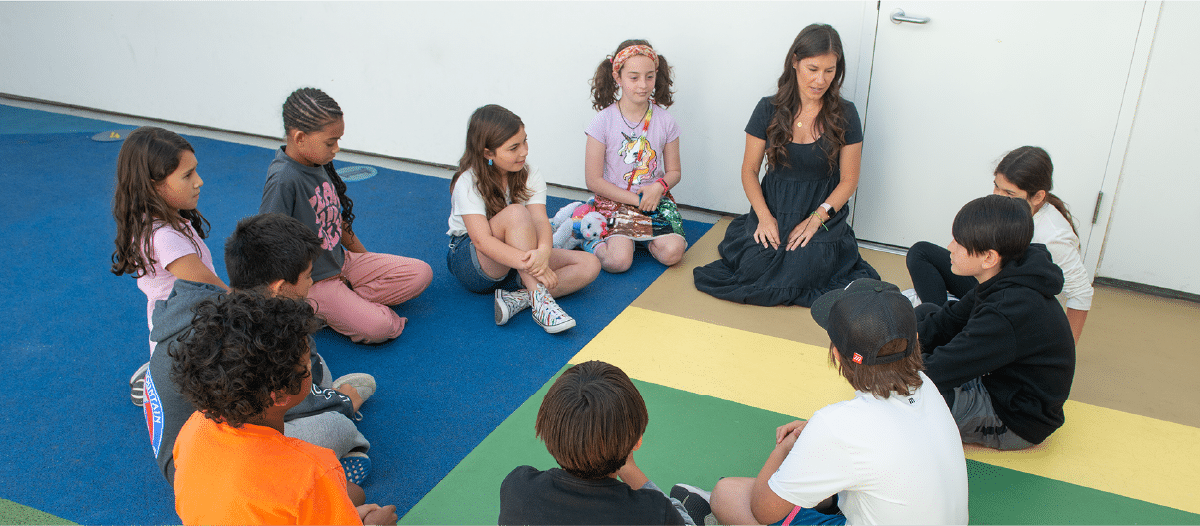Ensuring a Smooth End to the School Day

The end of the school day can be a challenging, hectic time. As the day’s final lesson or period concludes, students must pack up their belongings and often organize homework and other take-home materials. Students’ energy is often high, while teachers are running on fumes. While it can feel difficult to organize a closing activity, providing just a few minutes of reflection can be enormously beneficial for students and teachers alike.
What does a smooth end to the day look like?
Elementary school: Closing circle is a quick, five-to-ten-minute gathering of students at the end of the day once they are ready to head home (their bags should be packed beforehand). During closing circle, students stand or sit in a circle together. As they face each other, each child has the chance to speak, whether individually or in a joint song or chant. Unlike Morning Meeting, there is no set structure to closing circle and you can use it in whatever way feels authentic, relevant, and important to you and your students on that particular day. The goal is to end the day on a positive note.
Middle school: A closing routine is an opportunity for purposeful closure during the last five to ten minutes of school. Students will either think about an accomplishment from their day or set a personal goal for the following day. Students might also participate in an interactive learning structure or brain break. The focus here is on the positive. The closing of the day is not a time to address problems going on in the class or make major community decisions—needs better addressed during Responsive Advisory Meetings. Rather, this is an opportunity to help cultivate a supportive classroom environment that celebrates day-to-day accomplishments, large and small.
Why is closing the day beneficial for your students?
Elementary school: Closing circle can promote a positive class climate by increasing students’ feelings of significance, fun, and belonging. It is a great time to boost student confidence by discussing accomplishments of the day or setting goals for the next. Additionally, it prepares students to transition from school to home or after-school activities.
Middle school: Closing the day with an organized activity gives students a chance to reflect on their learning. Students can solidify their understanding and stretch their critical thinking skills when led to think back on information they took in, question its validity, make connections, draw conclusions, or plan next steps. Doing this through brain breaks and interactive learning structures helps students both feel heard by their classmates and build a sense of belonging and significance while having fun.
What structures or activities work well for ending the day?
Elementary school: With elementary school students, you may want to sing a song together, discuss individual or group accomplishments from the day, play a game, or just say a friendly goodbye to each student around the circle!
Middle school: The reflection used to close the day can be simple. Consider using a brain break or interactive learning structure that your students have already learned and seen modeled and that takes into account their current needs and strengths. Using open-ended questions to spur conversation is ideal. For example, using an interactive learning structure like Stay & Stray or Maître’ d, pose these three questions:
- What is something you feel proud of accomplishing today?
- What is one thing you taught a teacher or classmate today?
- If you could change one thing that happened today, what would it be and why?
Key Considerations
As you observe students throughout the day or class period, think about the day they had. If there are community successes to celebrate, you might want to do a fun interactive activity. If their day was challenging, they might need time to recharge or to reflect quietly through writing or drawing. As with any classroom procedure or routine, closing-of-the-day expectations need to be explicitly taught. Students will need to see the routine modeled and practiced with guidance. Interactive Modeling is a quick and effective way to do this teaching.
For more reflective questions, games, and activities you can try in your elementary classroom, Check out Closing Circles. For more engaging interactive learning structures for middle school students, check out Middle School Motivators!
Alyssa Brunner is a curriculum and instructional designer for Center for Responsive Schools. She has taught first, second, and fifth grade and is a certified Responsive Classroom educator.
Joe Cole is a curriculum and instructional designer and consulting teacher for Center for Responsive Schools.
